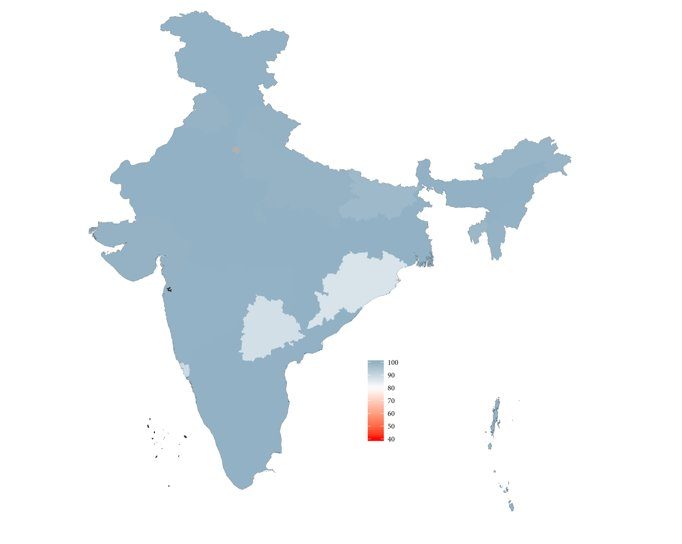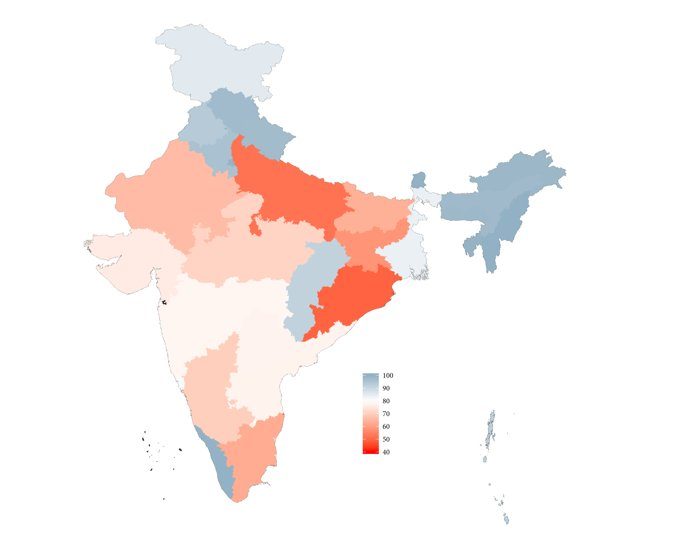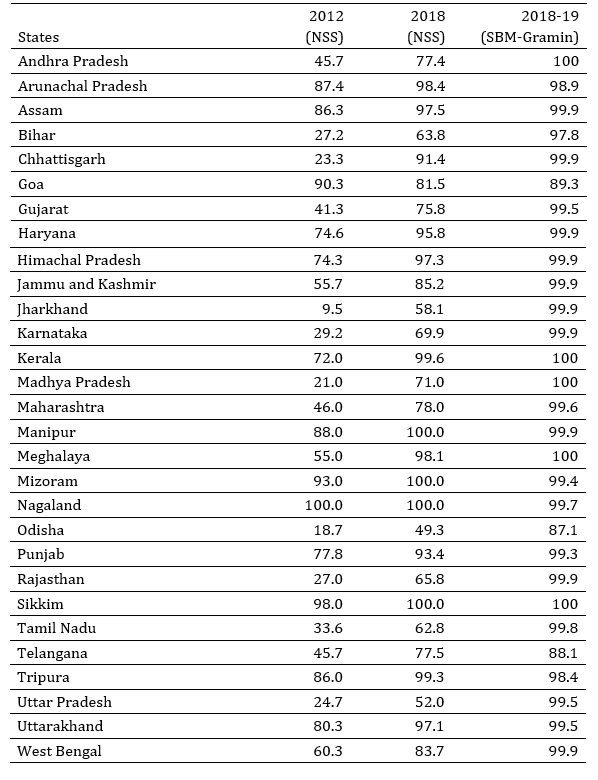John Stuart Mill was among the foremost liberal thinkers of modern times who wrote extensively…
Claim versus Reality: Has India become open defecation free? Suvidya Patel
(The NSO survey results call the bluff peddled by PM Modi on Swachh Bharat mission)
On October 2, 2019, Prime Minister Modi proudly proclaimed that India, which was home to the largest number of people in the world not having access to toilets, has become open defecation free. Is that true? Recently released data from the 76th round NSO survey show that the reality is very far from this claim, and that India continues to have the dubious distinction of being the country with largest number of households without a toilet.
Five years ago, on October 2nd, 2014, Modi launched the Swachh Bharat Mission (SBM), a programme whose target was to ensure that every household had and used toilet within five years. Until 2014, sanitation programmes in India had focused on providing public resources for construction of toilets. These were not very successful because of various problems including inadequacy of funds and poor spread of domestic supply of water.
With the SBM, the Modi government introduced a change in the approach of public policies towards sanitation. It was argued that expansion of sanitation was low because of lack of awareness and reluctance of people to use toilets at home, and India will not become open defecation free unless provision of toilets was accompanied by publicity campaigns and introduction of punitive measures, including humiliation, harassment and physical attacks, against people who did not use toilets.
While tall claims have been made by the Modi government over the last five years about India finally ridding itself of the scourge of open defecation, no credible evidence was made available to substantiate this claim other than backing it with another claim that 10 crore toilets had been constructed under SBM in five years.
The NSO conducted its 76th round of survey on “Drinking Water, Sanitation, Hygiene and Housing Condition” during July-December 2018. The results of the survey were, however, withheld along with many other surveys, and some of these were released only after an outcry in the media and a statement issued by a large number of eminent economists.
Data presented in the NSS Report No 584, based on the 76th Round survey, call the bluff that has been peddled by the government for the last five years. The nationally representative survey found that in 2018, when government was claiming that only 1.7 per cent rural households did not have latrines, as many as 28.7 per cent rural households did not have latrines. Taking rural and urban households together, the survey found that 20.2 per cent households did not have latrines.
Figure 1. Proportion of rural households having a toilet, Swachh Bharat Mission Data

Figure 2. Proportion of rural households having a toilet, NSS 76th round Survey

Figure 1 and 2, and Table 1, show the state-wise variations in access of rural households to latrines. The following features stand out from these figures and table.
The North-eastern states have achieved near universal latrine coverage. These states had high proportion of rural households with toilets even before SBM was launched.
Apart from the North-eastern States, and looking at the large states, Kerala is the only State that has truly achieved the status of being open defecation free. As per the NSS data, 99.6% of households in Kerala had access to latrine. Apart from Kerala, Himachal Pradesh (97.3%) and Uttarakhand (97.1%) are also close to achieving universal access to toilets.
Another noteworthy case is of Chhattisgarh. In 2012, only 23% of rural households in the state had toilets. Although not yet universal, access to toilets increased by 68 percentage points in Chhattisgarh between 2012 and 2018.
In contrast with these States, many others, all of them declared open defecation free(ODF) by the government, were found in the survey to have a very large proportion of rural households without toilets. For example, in Uttar Pradesh, declared ODF in January 2019, only 52% rural households had access to toilets. This proportion was 58% in Jharkhand (declared ODF in November 2018), 64% in Bihar (declared ODF in October 2019), 66 per cent in Rajasthan (declared ODF in June 2018) and 71 per cent in Madhya Pradesh (declared ODF in October 2018). The survey data show that even in Gujarat, the home-state of the Prime Minister, which was declared ODF as early as in February 2018, nearly one-fourth of rural households did not have toilets.
In the NSS survey of 2018, Odisha was found to have the lowest proportion (49%) of rural households with access to latrines. In contrast, as per the SBM data, 87% of the rural households in Odisha had latrines by 2018. In Odisha, only three out of 30 districts had been declared ODF till the end of 2018. But within the next few months, all the remaining districts were declared ODF.
The SBM was the most important flagship scheme of the first Modi government. The gap between government’s claims of achievements of this programme and the reality lie exposed with the results of this survey. On October 2nd this year, when Mr. Modi announced, “rural India has declared itself open defection-free”, he was, in fact, telling a blatant lie.
Table 1. Proportion of rural households having access to toilets, by State, 2012 and 2018, NSS surveys and administrative data
Research Scholar, Jawaharlal Nehru University (Email: suvidya.jnu@gmail.com)
Suvidya Patel is a Research Scholar, Jawaharlal Nehru University (Email: suvidya.jnu@gmail.com)
